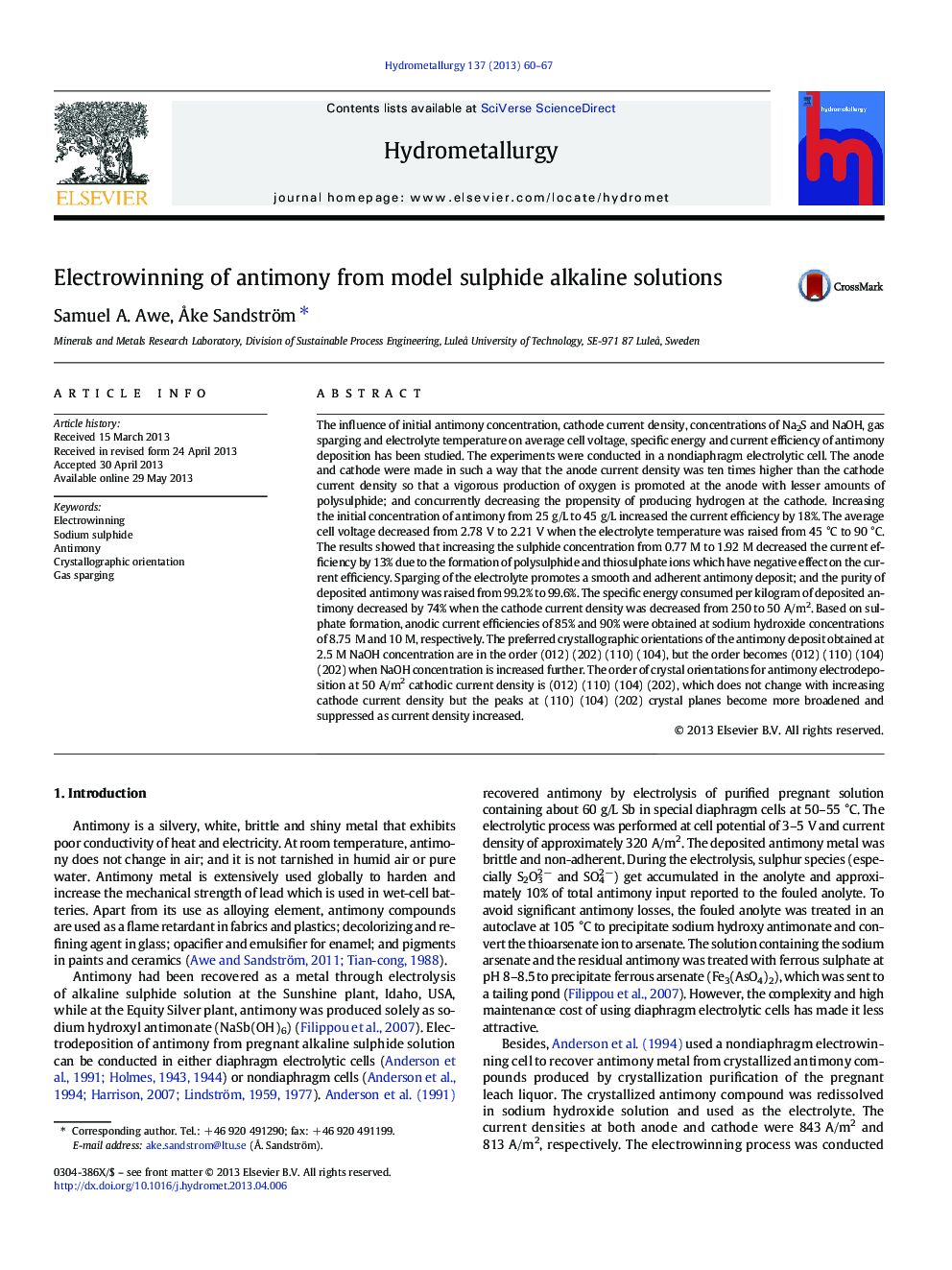| Article ID | Journal | Published Year | Pages | File Type |
|---|---|---|---|---|
| 6659327 | Hydrometallurgy | 2013 | 8 Pages |
Abstract
The influence of initial antimony concentration, cathode current density, concentrations of Na2S and NaOH, gas sparging and electrolyte temperature on average cell voltage, specific energy and current efficiency of antimony deposition has been studied. The experiments were conducted in a nondiaphragm electrolytic cell. The anode and cathode were made in such a way that the anode current density was ten times higher than the cathode current density so that a vigorous production of oxygen is promoted at the anode with lesser amounts of polysulphide; and concurrently decreasing the propensity of producing hydrogen at the cathode. Increasing the initial concentration of antimony from 25 g/L to 45 g/L increased the current efficiency by 18%. The average cell voltage decreased from 2.78 V to 2.21 V when the electrolyte temperature was raised from 45 °C to 90 °C. The results showed that increasing the sulphide concentration from 0.77 M to 1.92 M decreased the current efficiency by 13% due to the formation of polysulphide and thiosulphate ions which have negative effect on the current efficiency. Sparging of the electrolyte promotes a smooth and adherent antimony deposit; and the purity of deposited antimony was raised from 99.2% to 99.6%. The specific energy consumed per kilogram of deposited antimony decreased by 74% when the cathode current density was decreased from 250 to 50 A/m2. Based on sulphate formation, anodic current efficiencies of 85% and 90% were obtained at sodium hydroxide concentrations of 8.75 M and 10 M, respectively. The preferred crystallographic orientations of the antimony deposit obtained at 2.5 M NaOH concentration are in the order (012) (202) (110) (104), but the order becomes (012) (110) (104) (202) when NaOH concentration is increased further. The order of crystal orientations for antimony electrodeposition at 50 A/m2 cathodic current density is (012) (110) (104) (202), which does not change with increasing cathode current density but the peaks at (110) (104) (202) crystal planes become more broadened and suppressed as current density increased.
Related Topics
Physical Sciences and Engineering
Chemical Engineering
Chemical Engineering (General)
Authors
Samuel A. Awe, Ã
ke Sandström,
